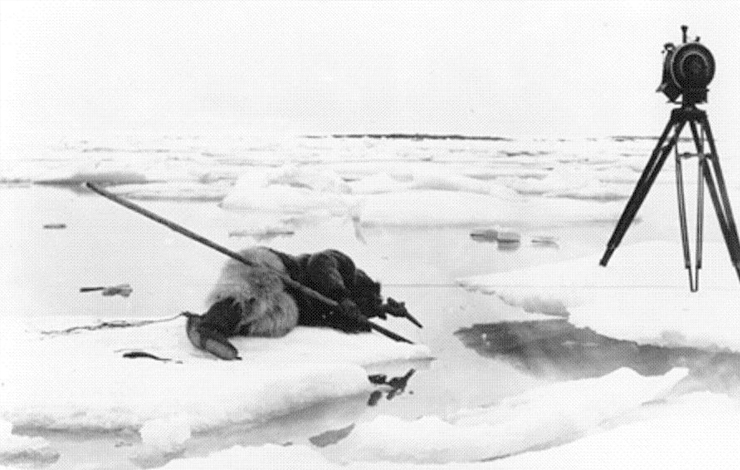There is a thin line between fiction and reality. William Rothman points out that “fiction films do bring real life to the screen”, as the subjects that are being filmed are real. However, it is also true that documentaries are fictional, because once they appear on screen, the subjects being filmed become virtual ones. So how do we distinguish between the two?
Robert Flaherty’s Nanook of the North (1922) is considered to be the pioneer of all documentaries in this respect. In capturing the daily struggles of a man called Nanook and his family, its authenticity has been the subject of many debates since its release. This criticism stems from questionable decisions made on behalf of Flaherty himself. For instance, the filmmaker decided to change his main actor’s name from Allakariallak to Nanook, specifically for the purpose of the documentary. This alone gives the spectator an incentive to be distrustful toward the veracity of the film. Yet, the first time we see Nanook, he is staring straight in to the camera, thus Flaherty is acknowledging from the outset the relationship between the subject being filmed and the camera itself. Therefore, by not manipulating the spectator’s point of view by hiding the various devices he is using, it is clear that Flaherty is offering the viewer an honest account of the eschimo’s culture.
Jean-Louis Baudry says that when the camera is positioned at eye level, it produces a “transcendental subject”, and the limited visual space allows the viewer to attribute meaning to what he/she is seeing, thus the eye is given false freedom of movement. Flaherty is, therefore, taking the spectator on a journey, and allowing them to both observe a different culture, and at times be part of it through the eyes of Nanook.
What was different about Flaherty’s work at the time was his concept of seizing the moment; the recording of raw footage which had never been captured before. An example of this is the Nanook versus walrus fight mid-documentary. Flaherty says: “For a long time it was nip and tuck-repeatedly—the crew called to me to use the gun—but the camera crank was my only interest then and I pretended not to understand.” The originality of this scene is evident in his work, as he demonstrates in real time how long it actually took to capture an animal of that size and weight.
Furthermore, there are other factors which contribute to its authenticity, such as Nanook not knowing what a gramophone was. He picks up the disc, he looks at the camera, and he bites it. To some this may appear childlike, but to others it presents itself as a sign of naivety originating from the difference in culture. Again, this adds to the authenticity of the documentary, in that it is evident that he was not instructed to bite the disc. It was his primitive instinct, as it was an unknown object to him.
Nanook of the North represents the ideal relationship between camera and its subject, is pushes the boundaries of realism further than they had ever been pushed before Flaherty, thus a documentary doesn’t necessarily have to be truthful to the letter in order to be real.
